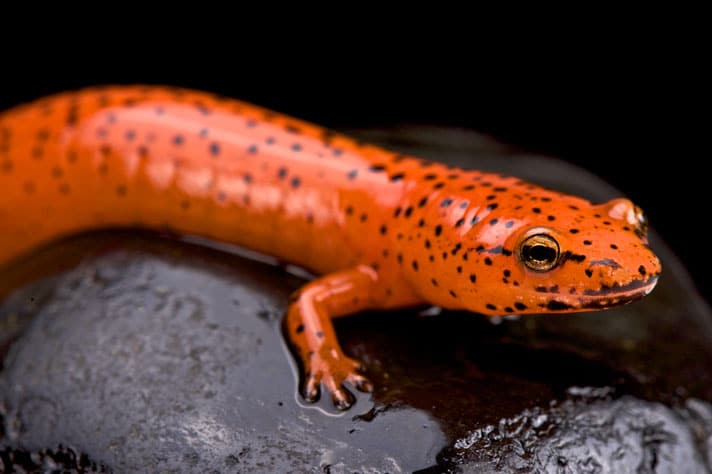The researchers say that these wildlife underpass tunnels can reduce the deaths of amphibians, while helping to bolster the ecosystems in which these animals live.
Researchers with the University of Vermont, Vermont Agency of Natural Resources and the Town of Monkton Conservation Commission have released a study that says wildlife underpasses have reduced amphibian road mortality by 80 percent.
The researchers say that these wildlife underpass tunnels can reduce the deaths of amphibians, while helping to bolster the ecosystems in which these animals live. The decade long study looked at two wildlife underpasses in the town of Monkton, Vermont. The study involved monitoring the amphibian road mortality in the five years before the construction (2011-2015) of the underpasses and then seven years after the completion (2016-2022) of the underpasses.
Tiger Salamander Crossing Tunnels In Northern California Are Working
“We hypothesized that the total amphibian mortality would be significantly less than in control areas after underpass construction, and that reductions in mortality would be most pronounced for non-arboreal species, because arboreal species may climb over the structure, the researchers wrote in their paper.
“We also hypothesized that buffer areas would act more like control areas than treatment areas. Our research provides resource managers with valuable information about the effectiveness of underpasses for amphibians, which is essential given the concerning impacts of road-induced wildlife mortality and the high cost of these structures.”
The researchers counted 12 species of frogs, toads, and salamanders that they encountered, dead and alive at three zones, one which had no wildlife underpass, which served as the control, a second spot that had a wildlife underpass that served as the treatment area, and a third which had a buffer area. They found the death rates were lower in both the treatment and the buffer areas and more in the control area. In total, the researchers counted 5,273 amphibians. of this, half of the 1,702 spotted salamanders were killed on the road and 70 percent of the 2,545 spring peeper frogs were dead.
The researchers say in their study that wildlife underpasses effectively reduced amphibian mortality by 80.2 percent along the 1.3 km stretch of Monkton Road in the state. It also led to a 94.3 percent decrease in non-arboreal amphibian mortality in the same area.
The construction of wildlife corridors have had mixed success, at least in North America. A tiger salamander crossing in California, constructed in 2011, has been fairly successful in helping the amphibians cross the road. A study of turtle ecopassages in Ontario, Canada, found that turtles hardly used the passages and were still getting killed on the roads, and the animals that were using the passages regularly were ducks and geese. They concluded that when these corridors are built, the target species must be kept in mind during construction to enhance the chances that the species will use it.
An abstract of the study, “Assessing the efficacy of wildlife underpasses in mitigating amphibian road mortality: A case study from the northeastern United States” can be read on the Journal of Nature Conservation website.



